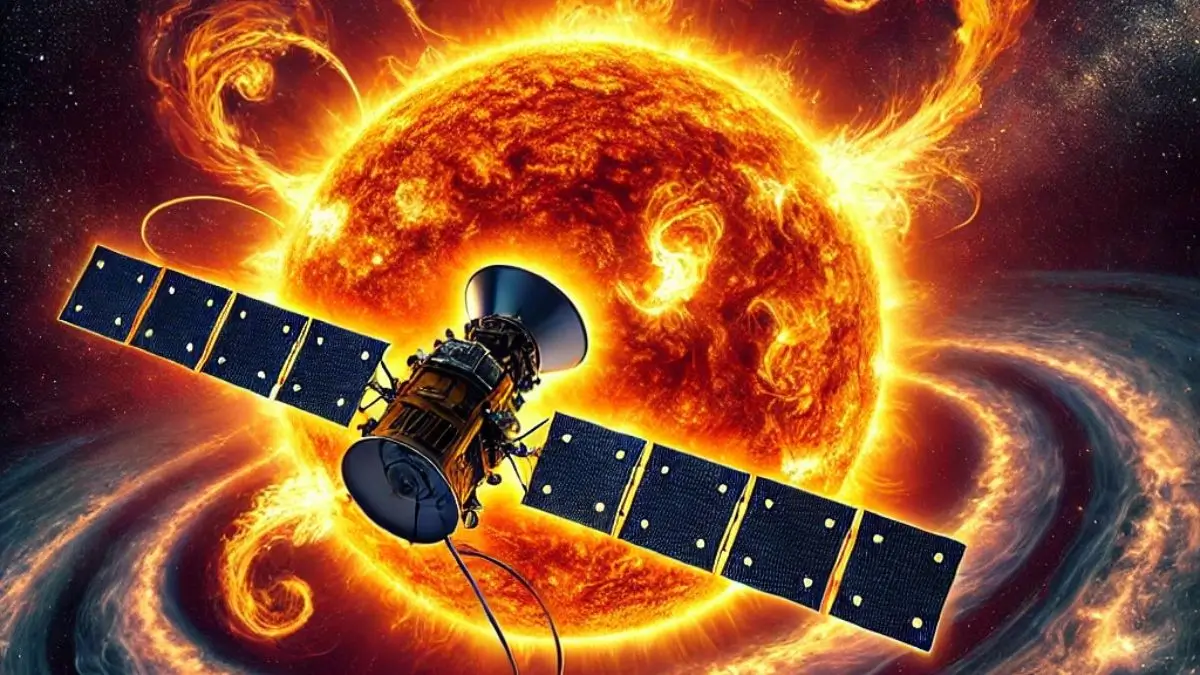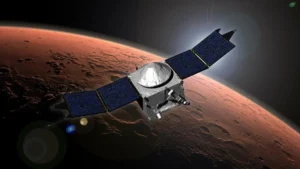The Aditya-L1 mission, India’s first dedicated solar observatory, has achieved a groundbreaking discovery by capturing the first-ever image of a solar flare ‘kernel’. This rare event was recorded in the lower solar atmosphere, specifically in the photosphere and chromosphere. The finding will significantly enhance scientists’ understanding of the Sun’s energy bursts and solar dynamics.
Mission Overview
- Launch Date: September 2, 2023
- Orbit Placement: January 6, 2024
- Orbit Type: Lagrange Point L1 (1.5 million km from Earth)
- Mission Objective: Continuous solar observations without eclipses or obstructions
- Aditya-L1’s strategic placement at L1 ensures uninterrupted data collection, making it an essential asset for solar research.
Key Observations and Instruments
Solar Ultraviolet Imaging Telescope (SUIT)
- Captured the solar flare ‘kernel’ in the Near Ultraviolet (NUV) band
- Observes the Sun in 11 different wavelengths
- Helps study different atmospheric layers
Other Instruments
- SoLEXS & HEL1OS: Study solar X-rays and detect flare activity & energy bursts
- Instruments provide a comprehensive view of solar dynamics
Major Discovery: X6.3-Class Solar Flare
- SUIT detected an X6.3-class solar flare, one of the most intense types of eruptions.
- The brightening in the NUV range was observed in unprecedented detail.
- This discovery confirms how solar energy moves through different atmospheric layers.
Understanding Solar Flares
- Solar flares are sudden bursts of energy from the Sun’s surface.
- They occur due to the Sun’s dynamic magnetic field, releasing radiation and charged particles.
- These eruptions can impact Earth’s communication and space weather.
- Aditya-L1’s advanced instruments help scientists analyze how flare energy spreads across the solar atmosphere.
Scientific Significance
- NUV observations of solar flares were rare before Aditya-L1 due to the lack of telescopes capable of such imaging.
- The latest findings confirm a link between flare energy and temperature changes in the corona.
- This discovery fills a crucial gap in solar research, helping predict space weather more accurately.
Future of Aditya-L1
- Continuous data collection to study the Sun’s impact on space weather.
- More discoveries expected in the coming years.
- The findings have been published in The Astrophysical Journal Letters.
- Aditya-L1 is pioneering India’s solar research and expanding our understanding of the Sun.
| Summary/Static | Details |
| Why in the news? | Aditya-L1 Captures First-Ever Image of a Solar Flare ‘Kernel’ |
| Orbit Type | Halo orbit at Lagrange Point L1 (1.5 million km from Earth) |
| Key Discovery | First-ever image of a solar flare ‘kernel’ |
| Major Event | Observed X6.3-class solar flare (Feb 22, 2024) |
| Main Instrument | SUIT (Solar Ultraviolet Imaging Telescope) |
| Other Instruments | SoLEXS, HEL1OS (Solar X-ray studies) |
| Scientific Impact | Enhanced understanding of solar energy movement & flares |
| Data Publication | The Astrophysical Journal Letters |



 NASA Loses Contact with MAVEN Spacecraft...
NASA Loses Contact with MAVEN Spacecraft...
 US FDA Qualifies First AI Tool to Accele...
US FDA Qualifies First AI Tool to Accele...
 11th India International Science Festiva...
11th India International Science Festiva...







